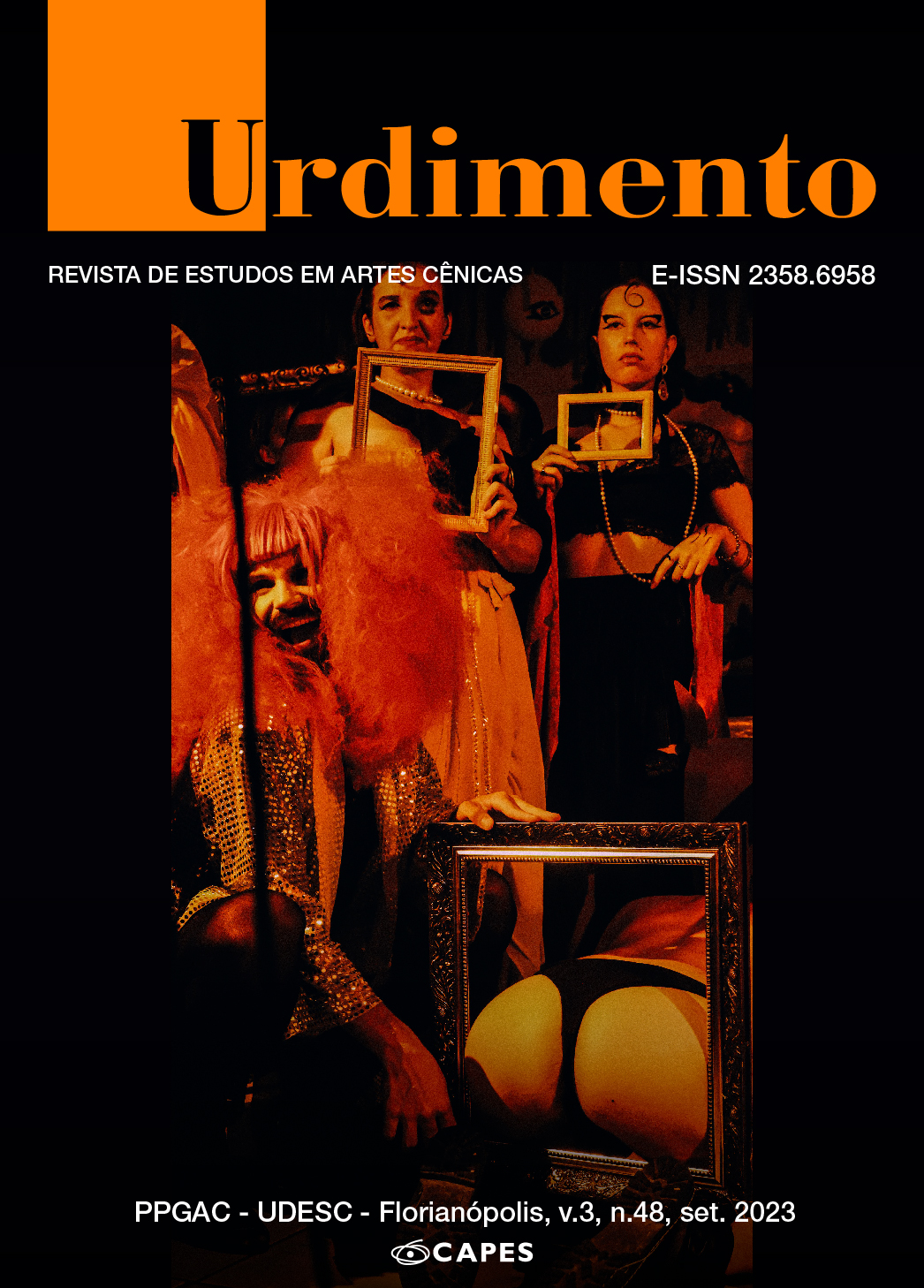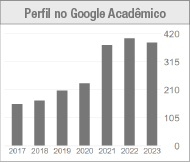Crip Dramaturgies: the ambiguous undoing of the body-organism in anti-anthropocentric scenes
DOI:
https://doi.org/10.5965/1414573103482023e0109Keywords:
Cripstemologies, crip dramaturgies, non-anthropocentric micropoliticsAbstract
The aim of this article was to present crip dramaturgies as an operative and political logic to create dance. Since the years 1990, the main researches of the area, had already recognized the importance of the body and the movement, beyond the verbal language and theatrical texts. But what is established after 2000 with the crip theories is the emphasis in the failure, in the decentralization of human life and in the defunctionalization of the body-organism as a power of creation open to other bodies (animate and inanimate). Artists from diverse cultural contexts have created their dance dramaturgies as devices to highlight singularities, include other lives, and activate non-anthropocentric strategies of creation. In this sense, we highlight the research of the Korean Jeong Geumhyung, the Chilean Manuela Infante and the Brazilian Eduardo Fukushima.
Downloads
References
ADOLPHE, J.-M. (ed.). Nouvelles de Danse. Bruxelas: Contredanse, n. 31,1997.
BLEEKER, Maaike. Dramaturgy as a mode of looking. In: BRIZELL, Cindy and Lepecki, André (eds.), On Dramaturgy, the labor of the Question. Women & Performance: a journal of femininst theory. Vol. 13:2, Issue 26. New York: NYU, 2003, p.163-172.
BRIZELL C.; LEPECKI, A. (ed.). On Dramaturgy, the labor of the Question. Women & Performance: a journal of feminist theory, New York, v. 13, n. 2, p. 15-16, 2003.
COCCIA, Emanuele. A Virada Vegetal. Trad. Felipe Augusto Vicari de Carli. São Paulo: ed. n-1, 2018.
DUGGAN, Lisa. Merri Girl in need of a torniquete: memoir of a borderline personality. Berkeley: Seal Press, 2010.
ECKERSALL, P.; GREHAN, H.; SCHEER, E. (ed.). New Media Dramaturgy, Performance, Media and New-Materialisms. New York: Palgrave MacMillan, 2017.
HALBERSTAM, Jack. Arte Queer do fracasso. Trad. Bhuvi Libanio. Recife: Ed Cepe, 2020.
HANSEN, P.; CALLISON, D. (ed.). Dance Dramaturgy Modes of Agency, Awareness and Engagement. New York: Palgrave MacMillan, 2015.
LEPECKI, A. Choreography as Apparatus of Capture. TDR: The Drama Review, Cambridge, v.51, n. 2, p.119-123, 2007.
MBEMBE, A. Necropolítica. Trad. Renata Santini. São Paulo: ed n-1, 2018.
MORAGA, Cherri e Gloria Anzaldúa (org.). This bridge called my back: writings by radical women of color. Berkeley: Third Women Press, 1981
McRUER, Robert. Crip theory: cultural signs of queerness and disability. New York: New York University Press, 2006.
ROMANSKA, M. (ed.). The Routledge Compagnion to Dramaturgy. New York: Routledge, 2015.
SEDGWICK, Eve Kosofsky. Epistemology of the closet. Berkeley: University of California Press, 1990.
UNO, K. Hijikata. Tatsumi, pensar o corpo esgotado. Trad. Christine Greiner e Ernesto Filho. São Paulo: ed n-1, 2012.
Published
How to Cite
Issue
Section
License
Copyright (c) 2023 Urdimento: Revista de Estudos em Artes Cênicas

This work is licensed under a Creative Commons Attribution 4.0 International License.
Copyright Statement
The articles published by the magazine are free to use. The copyright is all assigned to the magazine. The articles whose authors are identified represent the expression from the point of view of their authors and not the official position of the journal Urdimento. The author (s) undertakes whenever publishing material relating to the article published in Revista Urdimento mention the said publication as follows: This article was originally published by Urdimento magazine in its volume (put the volume), number (put the number) in the year of (put the year) and can be accessed at:
http://www.revistas.udesc.br/index.php/urdimento
This work is licensed under a Creative Commons Attribution 4.0 International License.




